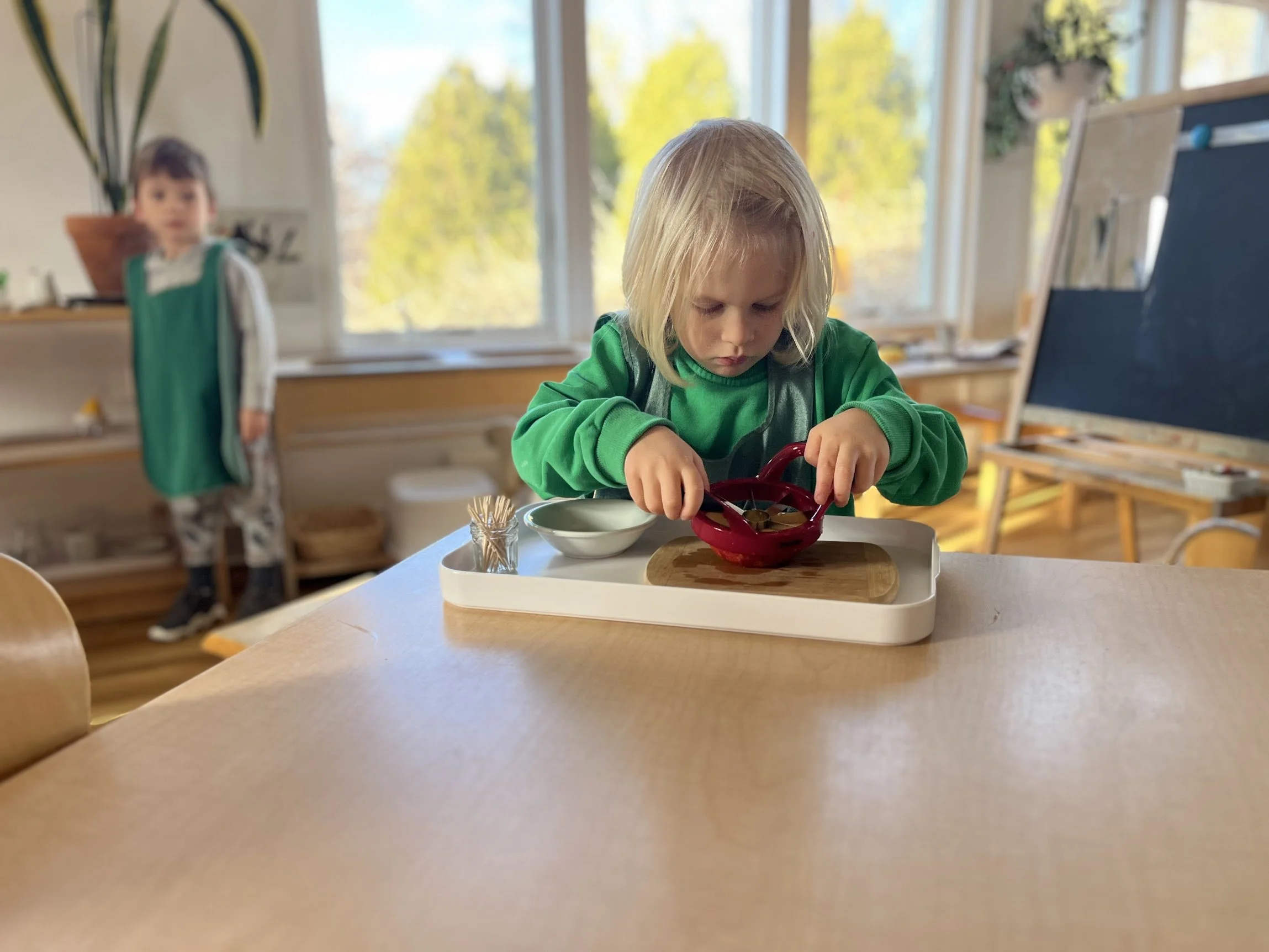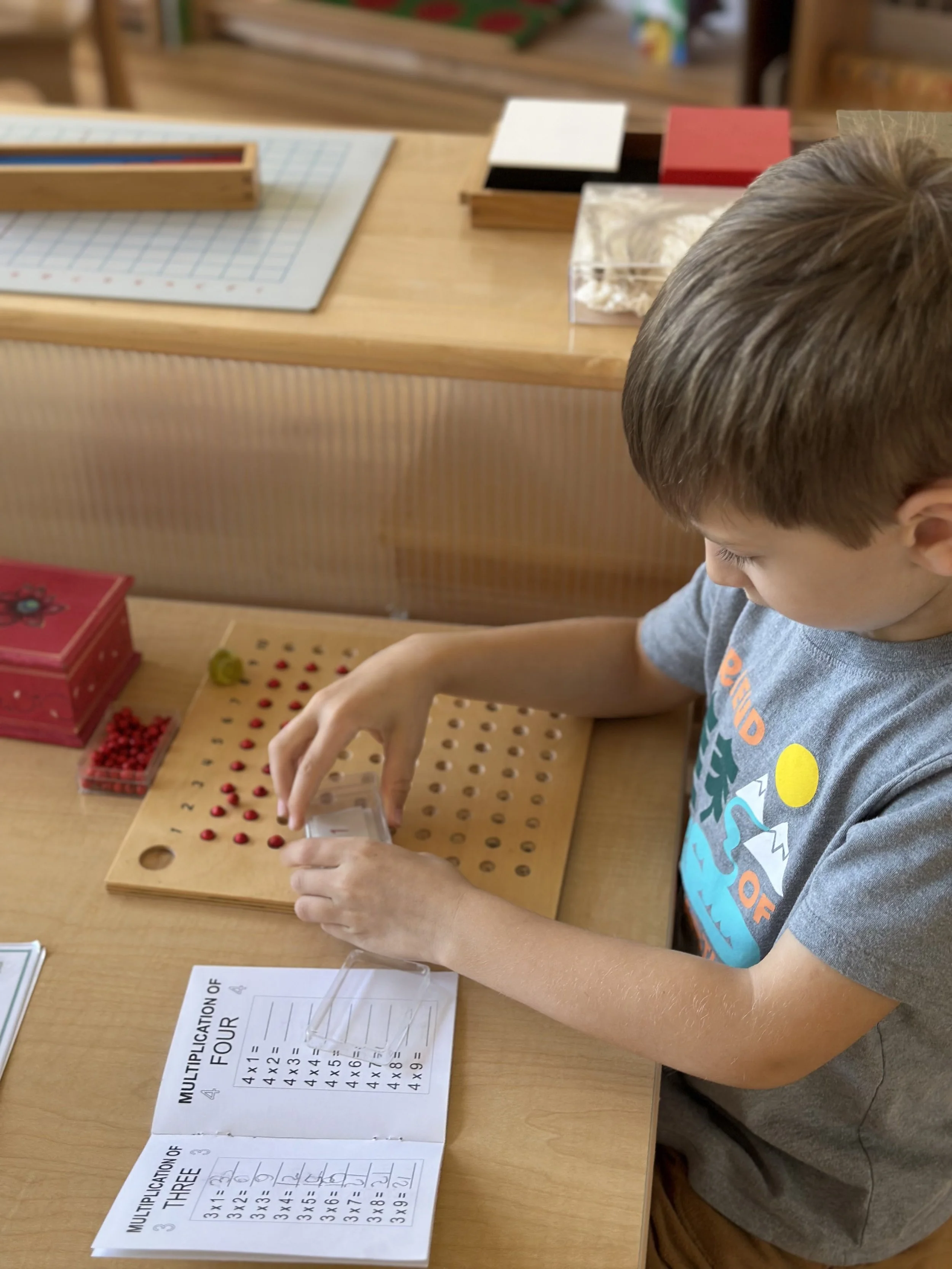
PRIMARY
PRESCHOOL THROUGH KINDERGARTEN
THE AGE OF ‘WHAT’?
The Montessori primary classroom is a vibrant, thriving environment. Children choose their work from among the self-correcting materials displayed on open shelves, grouped within specific curriculum areas. Over a period of time, the children develop into a “normalized community”, working with high concentration and few interruptions.
“”Normalization”, in Montessori terms, is the process whereby a child moves from being undisciplined to self-disciplined, through work in the environment. The process occurs through repeated work with materials that captivate the child’s attention, leading to deep concentration. The curriculum contains the following components: practical life, sensorial, cultural, language, math as well as peace education.
Practical Life in a Montessori primary classroom is often referred to as the heart of the environment. This area works on skills that are put into practical use in everyday life and are classified in the following sub categories: grace & courtesy, care of the self, care of the environment and control of movement. Each of these sub categories support the development of the child's autonomy, focus, concentration and coordination.
The Sensorial curriculum is designed for the child to gain experience and knowledge through the development of each sense. It builds on the foundation of the Practical Life curriculum and prepares the way for children to develop observation and problem-solving skills. The sensorial materials are designed to help young children learn how to reason, make distinctions, and decisions. This is the beginning of conscious knowledge.
Children engage their mathematical mind through the sensorial materials, long before they hit the sensitive period for math at about 4.5 years. With hands-on materials, students make discoveries through manipulation, experimentation and invention. Once a young child is proficient with 1:1 correspondence and linear counting, they are ready for operations. Using the golden bead materials, a child can both see and touch the quantity as they perform addition, multiplication, subtraction and division, setting a strong foundation as they move from the concrete to the abstract.
In the primary classroom, children prepare for reading and writing long before they hold a pencil, using materials that refine auditory, oral, visual and sensory/motor skills. They are introduced to letter sounds during this sensitive period, and following a phonetic approach, enriched with nomenclature and real world knowledge, many become emerging readers during this stage of development.
Maria Montessori defined cultural studies. as history, geography, physical science, botany, and zoology. The materials are designed to introduce the young child to our world in all its diversity. The curriculum strives to foster and nurture the young child’s curiosity, encourage exploration, and develop observation skills.
Peace education is an ever present ongoing work in Montessori education. It begins with the deep respect for the child, and provides social emotional skills as adults model grace and courtesy alongside specific lessons in this area. This social emotional work is one of the most important aspects to the primary curriculum and was Maria’s vision for the path toward a more peaceful world.
“The Primary program at Cornerstone has been an incredible introduction to education for our children. Our daughter thrived over the three years, benefiting greatly from the consistency and the deep sense of trust built with the teachers and the classroom. She developed confidence in navigating social relationships with both older and younger peers, which has been invaluable. The teachers were exceptionally supportive, meeting her where she was developmentally and tailoring their guidance to her individual learning pace and style. We also love the light-filled classrooms and connection to the school’s beautiful campus that add to the nurturing and inspiring learning environment.”
Emily Chadwick, Cornerstone Parent



